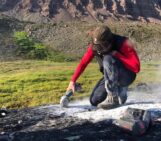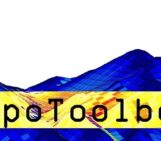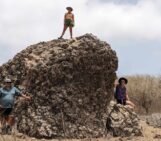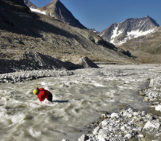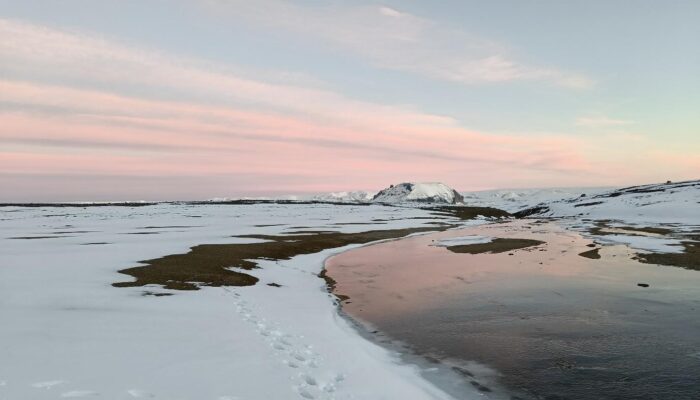
This blog post is part of our series: “A day in the life of a geomorphologist” for which we’re accepting contributions! Please contact one of the GM blog editors, Emily or Emma, if you’d like to contribute on this topic, or others.
by Christopher Stringer, PhD researcher, School of Geography, University of Leeds
Twitter: @sedsstringer | Email: gycds@leeds.ac.uk
The sky was pink as the sun rose over Lachman Crags on James Ross Island, Antarctica. It was the end of February, and the icicles hanging off the bottom of my trousers told me that winter was starting to creep in. I had spent the entire Austral summer collecting data on the variations in sediment yields in two streams close to the Czech J.G. Mendel Station, and I was on my final set of 4 am measurements. On that day, I was becoming slightly frustrated since the streams were frozen, so I stopped for a cup of tea and took the opportunity to admire my surroundings. I had spent nearly two months on the island by that point, but that morning I got a real sense of my isolation. Most people at the station were still asleep, the air was still and cold, and the vapour from the tea caused frost to form on my scraggy fieldwork beard. I heard some whales in the distance passing through the Prince Gustav Channel and I smiled – I don’t think I have ever felt more at peace. I probably only stopped for five or ten minutes – it was too cold to stop for much longer – but it’s a memory that will last a lifetime.
Now, this story gives a false perception of what being a geomorphologist is like day-to-day. Much like any other job, you have to take the rough with the smooth. Writing papers is challenging, and having your work critiqued, challenged, and reviewed can be daunting and stressful. Additionally, the self-motivation required to drive your research forward can be very testing at times. Nevertheless, there’s nothing else I would rather be doing with my life. Despite its challenges, my research has allowed me to take part in two Czech expeditions to Antarctica, and through my PhD I have managed to work with a wide range of geomorphologists looking at rivers, soils, and mass movements in cold regions, and have aided the development of undergraduate students by helping in their computer practicals.
Research is tough, but it is rewarding work. As I embark upon the final year of my PhD, those tough days get a little more frequent, but I’ll always have those 10 minutes watching the sun rise on James Ross Island to think back to; both to ground me and to motivate me towards future work that can take me to the next beautiful polar region.
Did you enjoy this blog post? This blog post is part of our series: “A day in the life of a geomorphologist” for which we’re accepting contributions! Please contact one of the GM blog editors, Emily or Emma, if you’d like to contribute.

